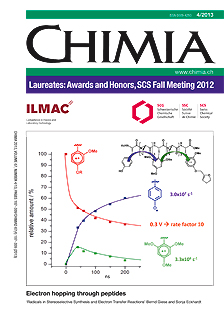Modeling and Validation of Heat and Mass Transfer in Individual Coffee Beans during the Coffee Roasting Process Using Computational Fluid Dynamics (CFD)
FHHES Universities of Applied Sciences
DOI:
https://doi.org/10.2533/chimia.2013.291Keywords:
Coffee roasting, Cfd, Heat and mass transfer, ModelingAbstract
Heat and mass transfer in individual coffee beans during roasting were simulated using computational fluid dynamics (CFD). Numerical equations for heat and mass transfer inside the coffee bean were solved using the finite volume technique in the commercial CFD code Fluent ; the software was complemented with specific user-defined functions (UDFs). To experimentally validate the numerical model, a single coffee bean was placed in a cylindrical glass tube and roasted by a hot air flow, using the identical geometrical 3D configuration and hot air flow conditions as the ones used for numerical simulations. Temperature and humidity calculations obtained with the model were compared with experimental data. The model predicts the actual process quite accurately and represents a useful approach to monitor the coffee roasting process in real time. It provides valuable information on time-resolved process variables that are otherwise difficult to obtain experimentally, but critical to a better understanding of the coffee roasting process at the individual bean level. This includes variables such as time-resolved 3D profiles of bean temperature and moisture content, and temperature profiles of the roasting air in the vicinity of the coffee bean.Downloads
Published
2013-04-24
Issue
Section
Columns, Conference Reports
Categories
License
Copyright (c) 2013 Swiss Chemical Society

This work is licensed under a Creative Commons Attribution-NonCommercial 4.0 International License.
How to Cite
[1]
B. Alonso-Torres, J. A. Hernández-Pérez, F. Sierra-Espinoza, S. Schenker, C. Yeretzian, Chimia 2013, 67, 291, DOI: 10.2533/chimia.2013.291.







